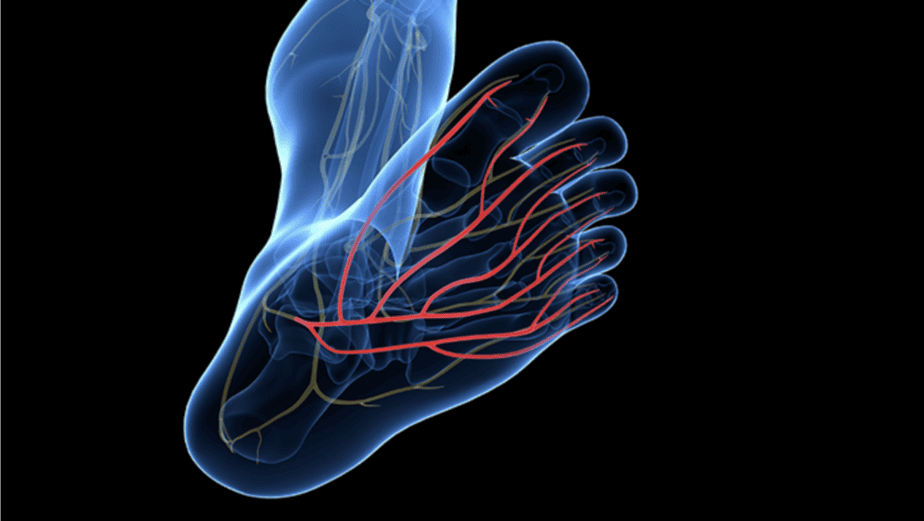
When shedding light on the 20 million Americans with neuropathy, the Social Security Administration considers both diabetic and peripheral neuropathy as disabling conditions in its Blue Book.
Individuals suffering from such conditions will qualify for SSDI in a situation where they’re unable to work. You can qualify for SSDI benefits as long as your symptoms include paralysis, tremors, ataxia, and involuntary movement.
If you suffer from neuropathy and are unable to work for a period of 12 months or more, you’re eligible to claim benefits under the SSDI program.
Here’s everything you need to know.
Can People With Neuropathy Work?
Neuropathy can impact a person’s balance, gait, and motor skills. As a result, individuals with neuropathy find it hard to perform daily tasks.
People diagnosed with neuropathy can showcase different symptoms depending on the root cause of the condition. While some experience symptoms in their feet and legs, others may suffer from physical disabilities in their hands.
While some patients can work with neuropathy, there are those who cannot. It depends on the severity of the condition. Jobs with higher physical requirements from a worker are harder to accomplish for individuals with neuropathy.
For instance, these include people who need to stand at a cash register all day long or sell products in a retail store. If you suffer from neuropathy in the lower region, you will not be able to accomplish such tasks and automatically qualify for SSDI benefits.
However, if you work at an office where your daily tasks keep you chained to a desk with limited walks, then you’d still be able to work. What matters is the type of neuropathy you’re suffering from and the kind of job you have at that instant.
What Are Severe Conditions in Neuropathy?
A range of symptoms are associated with neuropathic conditions, making it difficult for individuals to perform physical tasks.
For instance, paralysis and ataxia impact a person’s ability to walk, lift, and bend. In such cases, a person’s overall performance is limited and labor efficiency is thwarted due to an actual physical disability.
Ensure that your medical documentation includes a doctor’s note that specifies your physical limitations regarding daily activities. It should describe the kind of physical labor you’re allowed to do and include limits on walking, lifting, and standing.
A Social Security disability attorney says: “I believe it’s crucial to understand that the Social Security Administration recognizes neuropathy as a disabling condition. For those experiencing paralysis, tremors, ataxia, or involuntary movement due to neuropathy, SSDI benefits can provide essential financial support.”
Does the SSA Consider Neuropathy a Disability?
Neuropathy is a disability, as per the SSA. To qualify for SSDI benefits, you must adhere to medical and labor guidelines stated by the governing body.
As per section 11.14 in the Blue Book, individuals suffering from peripheral neuropathy are eligible to make a claim when:
- Motor skills are severely deficient in specific extremities, resulting in the inability to walk, stand, sit, or use any upper body functions.
- Physical functions are limited in terms of maintaining pace, remembering and applying information, and social interactions.
- Neuropathy prevents individuals from working for a period of 12 months or more, in which case you are considered physically disabled.
In simple terms, you must prove that you cannot work as a result of your disability. There are several other factors to consider before filing a claim:
- Showcasing 20 work credits as per your age and work experience
- Meeting medical guidelines set by the SSA in the Blue Book
Types of Neuropathic Conditions That Qualify for Disability Benefits
There are two types of neural conditions that qualify for SSDI benefits: peripheral and diabetic neuropathy. Other forms like poly or mono neuropathy can qualify for the same, as long as they meet the guidelines stated in the SSA’s Blue Book.
Peripheral Neuropathy Criterion
Peripheral neuropathy is a condition that impacts your hands and feet, hindering your work capabilities and daily routine. Most blue-collar jobs are eligible for SSDI benefits where it’s necessary to move about to perform normal work duties. For instance, these may include secretarial positions that require typing. Section 11.14, which addresses peripheral neuropathy, qualifies individuals who cannot perform gross motor functions.
Diabetic Neuropathy Criterion
Diabetic neuropathy or small fiber neuropathy is another condition that can impact your nervous system. In this case, high glucose levels affect the nerves, preventing individuals from performing physical tasks. As per section 9.08, you can apply for a claim if you’ve been diagnosed with diabetes, and your medical records must show symptoms of paralysis, tremors, ataxia, and involuntary movement in two or more arms or legs.
If you’re suffering from physical disabilities as a result of a neurological condition, you can apply for SSDI benefits with supporting documentation to confirm your case. For those lacking the time and resources, they have the option of getting legal assistance.


















Follow Us